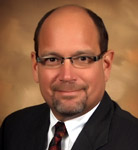Protecting Your Families and Business

Jim Starks's blog
Many Businesses Fail to Establish Safeguards Mitigating Cremation Risks (Part 2)
Posted by Jim Starks on October 1, 2014
This topic has been continued from last month’s column.
Risk Doesn’t Pause During Transportation
Some firms depend on the crematory to transport the deceased to the crematory. But having the crematory perform the transportation means the firms loses custody during a critical time. Several factors can affect this loss of custody, including the crematory’s van breaking down, whether the crematory adheres to the same standards of dignity and respect, and that the authorizing agent has authorized the firm with the care of the deceased.
Several factors also influence which crematory was selected. Sometimes they include personal or business relationships, convenience and cost.
But the most important factor in choosing a crematory is finding the one that returns the largest amount of cremated human remains that can be achieved and keeps comingling to the lowest possible level.
If that last factor isn’t considered, or the crematory chosen doesn’t do well on that factor, it could create issues in time. Due diligence is imperative when selecting a crematory. Many associations provide crematory inspection forms and those can be valuable if one knows what to look for. The problem is that many people do not and do not know what is acceptable on the form.
One last consideration is whether the crematory will add the firm as an additional insured and have their insurance company issue an Accord Certificate annually.
Your Firm is Still Responsible for Remains at the Crematory
Once a crematory is chosen and used, what happens at the crematory may have great effects on the firms using it.
For example, if a crematory is not secure, if the facility is not locked when the operator is not present, then anyone could access the equipment, human remains and cremated human remains. This would also give people access to take photos and post them on public digital sites.
Storage of human remains and cremated human remains must be respectful and secure at the crematory. When the human remains arrive to be cremated, if they are not placed immediately into the cremation chamber, they should be placed in a locked refrigeration unit rather than a container in the open area.
When the cremation chamber is cleaned, all measures should be taken to remove as much of the cremated human remains as possible. If there is visible residue remaining, the crematorium is not doing their job correctly, plus they are increasing the amount of co-mingling on each case they perform.
Firms should also know what happens to implanted medical metal that remains after cremation. There are three main ways to handle it after it has been cleaned of all removable cremated human remains: trash, recycle or bury in a cemetery. Whatever one used must be noted on the cremation authorization. The firms that recycle and receive money must inform the consumer that they will be receiving money.
Further, only one cremated human remains should be processed at a time. When the crematory processes more than one at a time, it creates an opportunity for the paperwork and labeling to be mixed.
Another issue of security at the crematory is where cremated human remains are stored. Often, they are left sitting on a desk or shelf. But these are not secure locations. To compound the situation, if the crematory itself isn’t secure then the cremated human remains are at an even higher risk of being lost or misplaced.
The Final Return of CHR is One Last Opportunity for Loss
When cremated human remains are released from the crematory to the funeral home or to the authorized agent, documentation should be retained. If the cremated human remains are released to the incorrect person, the damage could affect all parties.
The importance of documenting to whom the cremated human remains may be released has already been established, but it follows to make sure that the person is actually the correct person and to document that. A way to accomplish that is to retain a copy of the person’s identification and a signed release. Without asking for and attaching a copy of their identification to a signed release, a firm cannot prove to whom the cremated human remains were released.
But cremated human remains are not always picked up promptly, creating another opportunity for loss. When the cremated human remains arrive back at the funeral home, they should be logged and retained in a secured location with limited access.
Again, the biggest risk with cremation is that cremated human remains are irreplaceable. If they are lost or released to the wrong person and disposed of, they can never be replaced.
Lastly, every firm should establish and periodically review cremation policies and procedures. In fact, most death care businesses that deal with cremation do not have written policies and procedures. Most of these businesses are simply doing what they have done for years without realizing the amount of risk involved when a consumer requests cremation.
Every firm should establish and review current procedures and attempt to lower the possibility of loss. Even the minimum standards are not protective enough when dealing with cremation.
When I write an article on cremation, I attempt to upgrade the cremation procedures that many of the death care providers are currently following. These procedures may take more time or may add cost to your firm. If they do, you may want to research what you are charging and adjust to reflect the dignity and respect that everyone needs when dealing with the consumers that chose cremation.
Comments: